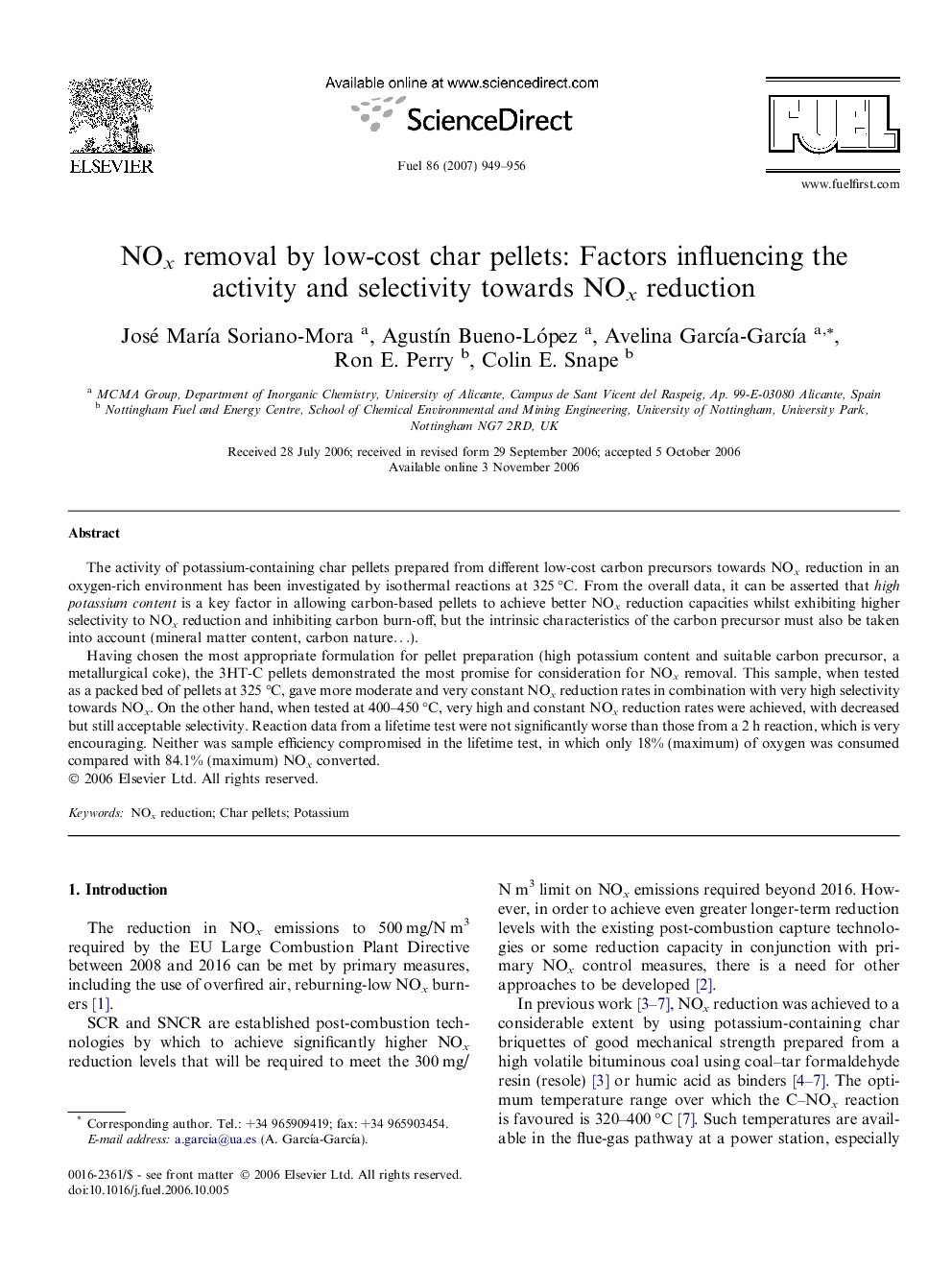| Article ID | Journal | Published Year | Pages | File Type |
|---|---|---|---|---|
| 208307 | Fuel | 2007 | 8 Pages |
The activity of potassium-containing char pellets prepared from different low-cost carbon precursors towards NOx reduction in an oxygen-rich environment has been investigated by isothermal reactions at 325 °C. From the overall data, it can be asserted that high potassium content is a key factor in allowing carbon-based pellets to achieve better NOx reduction capacities whilst exhibiting higher selectivity to NOx reduction and inhibiting carbon burn-off, but the intrinsic characteristics of the carbon precursor must also be taken into account (mineral matter content, carbon nature…).Having chosen the most appropriate formulation for pellet preparation (high potassium content and suitable carbon precursor, a metallurgical coke), the 3HT-C pellets demonstrated the most promise for consideration for NOx removal. This sample, when tested as a packed bed of pellets at 325 °C, gave more moderate and very constant NOx reduction rates in combination with very high selectivity towards NOx. On the other hand, when tested at 400–450 °C, very high and constant NOx reduction rates were achieved, with decreased but still acceptable selectivity. Reaction data from a lifetime test were not significantly worse than those from a 2 h reaction, which is very encouraging. Neither was sample efficiency compromised in the lifetime test, in which only 18% (maximum) of oxygen was consumed compared with 84.1% (maximum) NOx converted.
